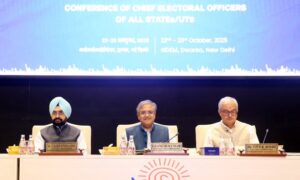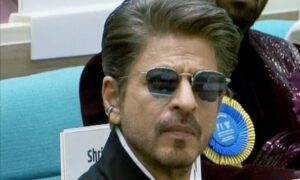
File Picture
Rusty cables, broken anchor pins, and loose bolts were among the lapses that were not addressed while renovating the suspension bridge in Morbi which collapsed last month into the Machchhu river killing 135 people, as per a preliminary probe by the Forensic Science Laboratory (FSL).
As per PTI report, The FSL report also pointed out that the new metal flooring increased the weight of the bridge. According to the prosecution, both the repairing contractors were not qualified to carry out such repair and renovation work.
Police have so far arrested nine persons including four from the Oreva group that was managing the British-era suspension bridge, which collapsed on October 30.
The prosecution on Monday submitted a primary FSL report as evidence in the court of the principal district and sessions judge, PC Joshi, hearing the bail plea of the accused.
“The report revealed that the cables on which the entire bridge was hanging were rusted. The anchor pins that hold the cables on the ground were broken while the bolts on the anchor were loose by three inches. The prosecution told the court that it is definitely considered as negligence,” said district government pleader Vijay Jani.
The arrested persons included Oreva managers Dipak Parekh and Dinesh Dave, and repair contractors Prakash Parmar and Devang Parmar, owners of Dev Prakash Solution, hired by the corporate group for the renovation of the bridge, among others.
Orvea Group had hired Dhrangadhra-based Dev Prakash Solution to renovate the bridge, which collapsed four days after it was thrown open to the public post-renovation.
During the hearing, Dipak Parekh attached a purchase order issued to Dev Prakash Solution from Oreva Group which says, “renovation will be after dismantling the bridge”.
“Dev Prakash Solution has admitted they had changed only the flooring. According to the FSL report, the new metal flooring also increased the weight of the bridge. Moreover, both the repairing contractors were not qualified to carry out such repair and renovation work,” said Jani.
As per the First Information Report, at least 250 to 300 people were present on the bridge when it collapsed after one of the cables snapped.
The report also revealed that the Oreva Group did not hire any expert agency to assess the load-bearing capacity of the bridge before throwing it open to the public.
“The group had sold 3,165 tickets on October 30 alone and there was no coordination between ticket booking offices on both sides of the bridge,” said Jani.
He said the booking clerks, who are under arrest, should have stopped the sale of tickets after an extent but they continued to sell tickets and allowed more people to go on the bridge.
The defence informed the court that three security guards were on duty on the day of the tragedy, two on both sides of the bridge and one in the middle of the structure. While two of the three guards are in custody, the third one fell into the river but survived.
“They should have stopped people from accessing the bridge in view of overcrowding. But, neither of them knew how to do crowd management. When the court asked two guards if they knew what crowd management is, they had no answer. And these guards were labour contractors who were hired on the same day as guards,” said Jani.
[the_ad id=”55722″]


















